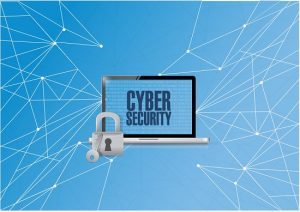
Cybersecurity issues are a growing threat to business, despite numerous technological advancements. Workers are still working remotely, even as life returns to a pre-pandemic normal.
Companies find it difficult to implement and maintain satisfactory cybersecurity practices in current financial recession. The organizations’ data is still unprotected, which makes them vulnerable to data breaches and cyberattacks.
Why you need employee cybersecurity training
Here are reasons why cybersecurity awareness training programs should be offered to employees. These programs are essential in today’s workplace, both at the office and at home. Learn seven essential ways to improve the effectiveness of your employee program.
Human error is the culprit
A recent Stanford University study found that human error is the greatest threat to cybersecurity. According to this study, 88 percent of data breaches were caused by employee errors. The study found that younger employees are more likely to be phished and to admit to making mistakes than older employees.
A study by IBM that examined thousands of customers across 130 countries found that human error was a significant contributor to 95 percent of all breaches. In other words, 19 of the 20 data breaches that were analyzed in this IBM study could have been prevented if human error was not present.
These results show that even the most advanced technical security measures are not stronger or more resilient than those who apply them. The first step to protecting your company against cyber threats is understanding the importance of human error. A proactive approach is essential to successfully reduce risk in 2021.
7 essential steps to cyber security awareness training
#1. Cybersecurity education for employees is ongoing
Your employees will be more successful in protecting your company and assets from phishing, malware, and other threats if they are more educated about cybersecurity risks. By investing in cyber literacy, your employees will be more aware of the importance and motivated to do a better job.
Cyber security awareness training is not enough to raise awareness. Top-performing cybersecurity training use a variety of scenarios to help employees understand what they need to be aware of and why. These programs don’t come on a one-and-done basis. They are held regularly, while continually integrating new and relevant knowledge.
#2. A hands-on learning approach
Your employees are only as effective as the theories they teach them about cybersecurity awareness when they actually put it into action. Your cybersecurity awareness program must go beyond mere training to ensure that your employees are able to prevent attacks such as phishing emails. Training is not enough. It’s just a way to get educational materials.
Instead, make sure that your employees learn the knowledge you intend to impart through your program. Employees will learn how to apply that knowledge and follow the lessons.
This hands-on strategy combines procedural learning with contextual, highly-relevant, as well as the immediate feedback. All parties involved will gain a better understanding of the subject and form memories that can change their habits or eliminate mistakes.
#3. Determining Risks
Cyberattacks can be more dangerous to certain employees than others. Statistics show that less than 20% of employees are responsible for the majority of human error-related loss.
Simulating employees at high risk is a good way to identify them. Next, use a specific formula and algorithm to measure risk effectively.
You’ll be able to create and implement highly targeted interventions that are tailored to each employee segment based on their risk level if you have a better understanding of the microsegments in your employee base.
You can get a better understanding of your risk groups by micro-segmentation. These insights will help you to:
- You will be better able to understand the different levels of risk that employees invite into your organization.
- You can identify more specific actions based on each employee and the associated risks.
- Supervise groups of employees to make monitoring more cost-effective, as opposed to individual workers, and still protect their privacy.
#4. Comprehensive Analytics
Predictive insider-persona analytics takes your targeted persona groups up to the next level. Analytics allows you to identify high-risk individuals and monitor them using specific markers.
This will allow you to identify groups and individuals that are most likely to pose threats to your organization before they appear. Then, you can take preventive action.
#5. Real-time feedback
Real-time feedback, as we have briefly mentioned, is an effective way to engage employees. It allows them to internalize and recall why they are doing what they do, and helps them avoid making mistakes.
By providing feedback,
- You show your employees the security gap that exists between them and the organization–evidence of their need for cybersecurity awareness training in the first place.
- Employees instantly understand what happened and how to avoid similar mistakes in the future, even more so when security events include live feedback.
- This “nibble-sized” approach allows employees to take advantage of learning opportunities that are relevant to their daily lives. They can quickly identify the training they need and then engage with it when it is most important.
#6. Change in the Culture
A deeper method to cybersecurity awareness training will eliminate the co-opting and negligence that can lead to human error. It encourages cultural change by addressing employee attitudes and beliefs head-on.
This is a highly personal task that addresses the motivations for malicious behavior and how employees see them. Instead of employees just going through their daily routines, you foster an environment of employee engagement.
Continuously delivering the previously mentioned awareness “bites” will help transform your organization’s cybersecurity culture. You must make sure they are easy to understand, engaging, and effective.
#7. Scientific training method
For long-term, optimal results, you should adopt a scientific training methodology. This method combines learning expertise, data science and automation to make security awareness training simple and efficient for businesses. This platform leverages your data to maximize the learning experience for each employee every day.
You can use a scientific training platform to:
- To improve employee performance, analyze the data.
- To keep it top-of-mind, you must provide continuous learning that is not boring.
- To optimize contextual delivery, you can achieve effective performance.
- To create strong cognitive patterns, use diverse stimuli that are relevant and applicable.
- To make learning relevant and memorable, engage in just-in time learning.
- Training at flexible intervals is possible that can be adjusted to each employee’s learning curve.
This combination of tips will give you complete security awareness.
Final thoughts
These seven principles will help you reduce the number of malicious attacks that are caused by employee error. This will increase employee engagement and empower them to protect your valuable assets and your bottom line.
Call SpartanTec, Inc. now if you are interested in training your employees about keeping your network secure and keeping cyberthreats at bay.
SpartanTec, Inc.
Charleston, SC 29407
843-418-4792
https://manageditservicescharleston.com/
Serving: Myrtle Beach, North Myrtle Beach, Columbia, Wilmington, Fayetteville, Florence, Charleston




 THE THREE TIPS TO A SUCCESSFUL CYBERSECURITY AUDIT
THE THREE TIPS TO A SUCCESSFUL CYBERSECURITY AUDIT
